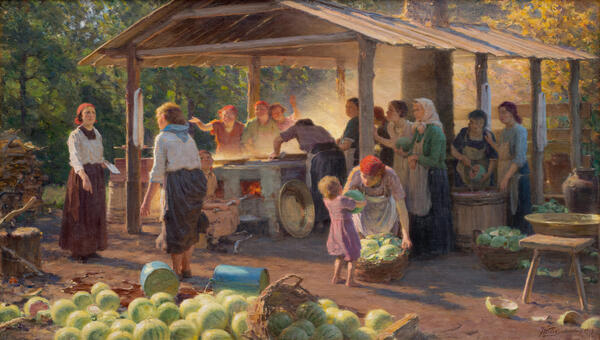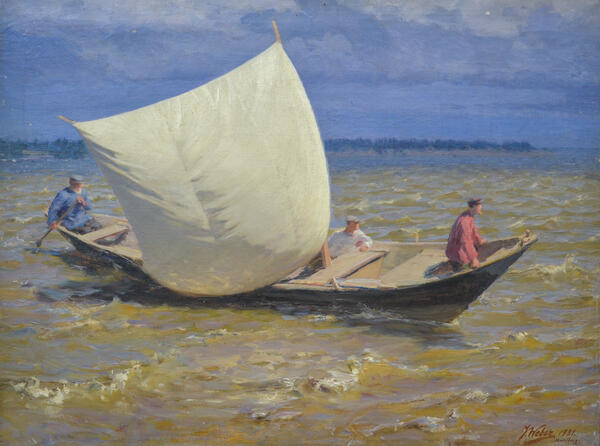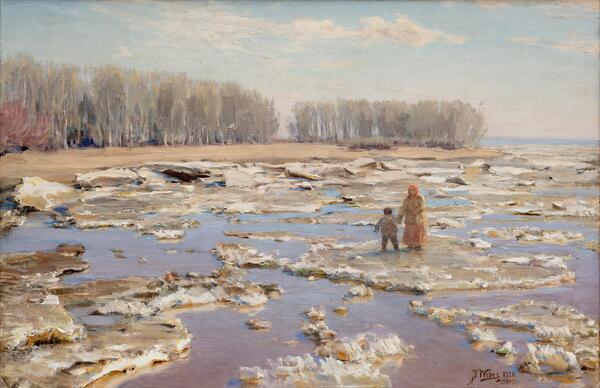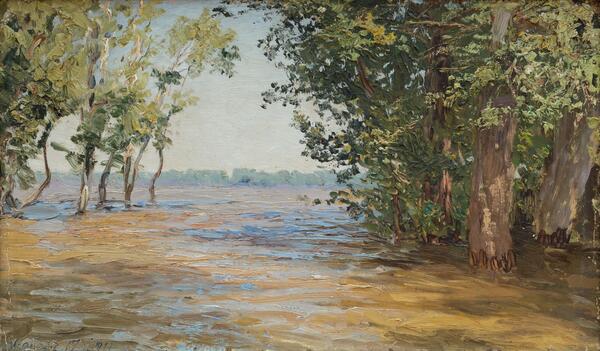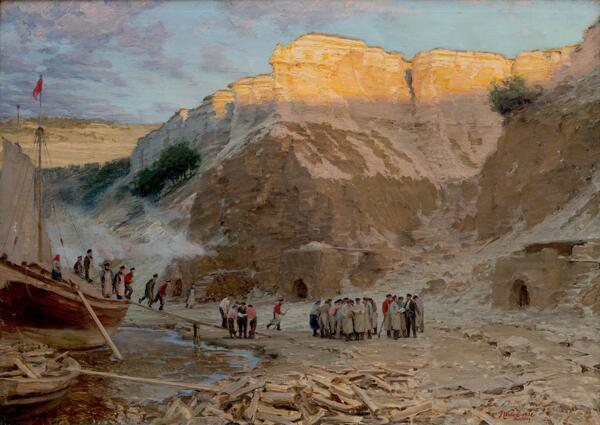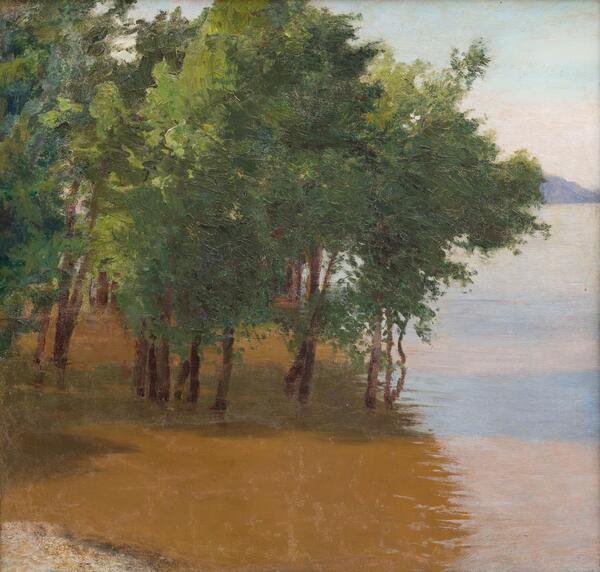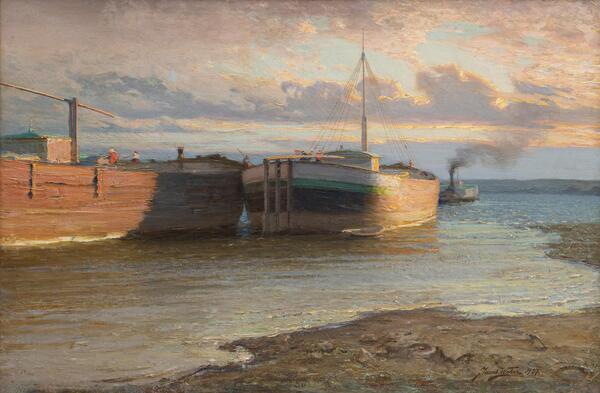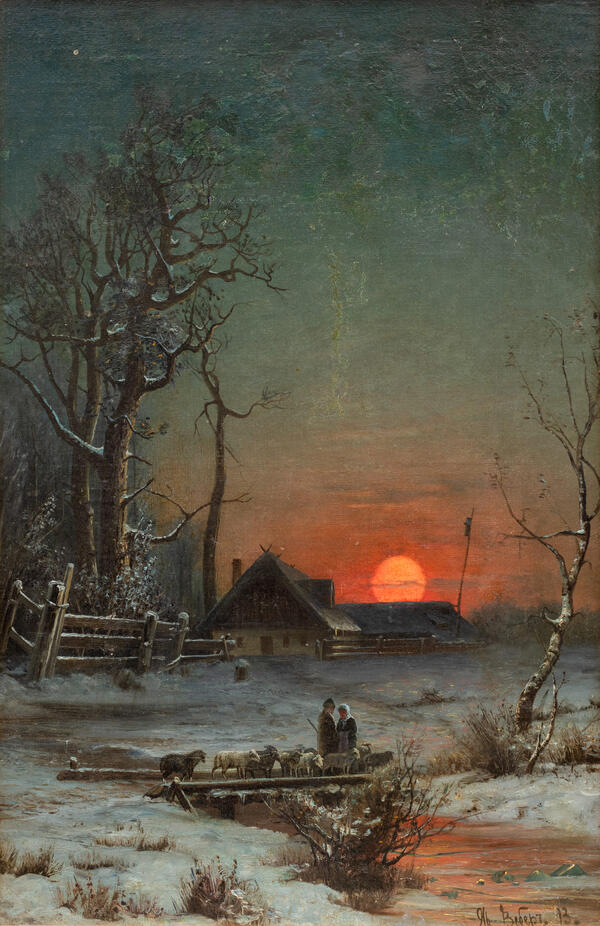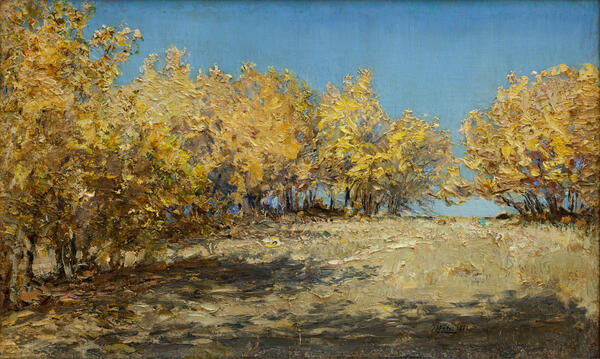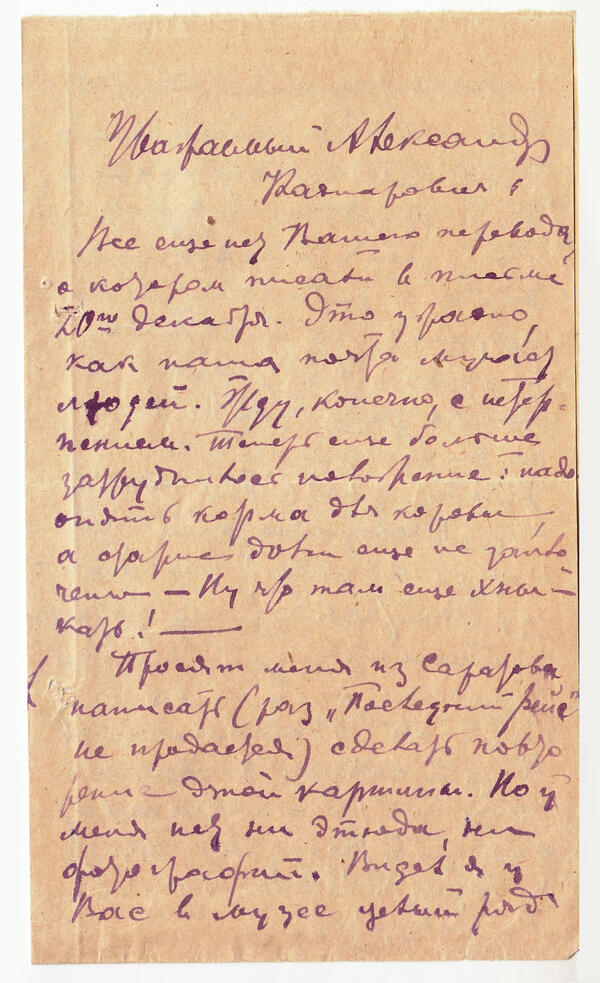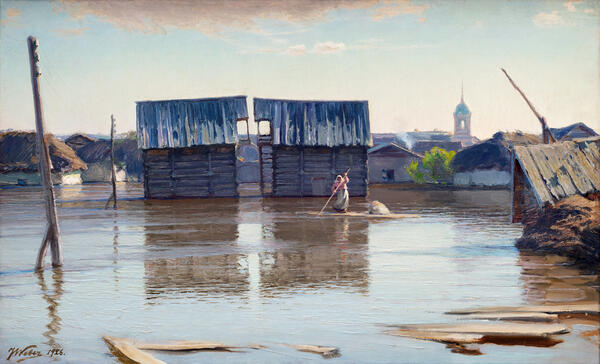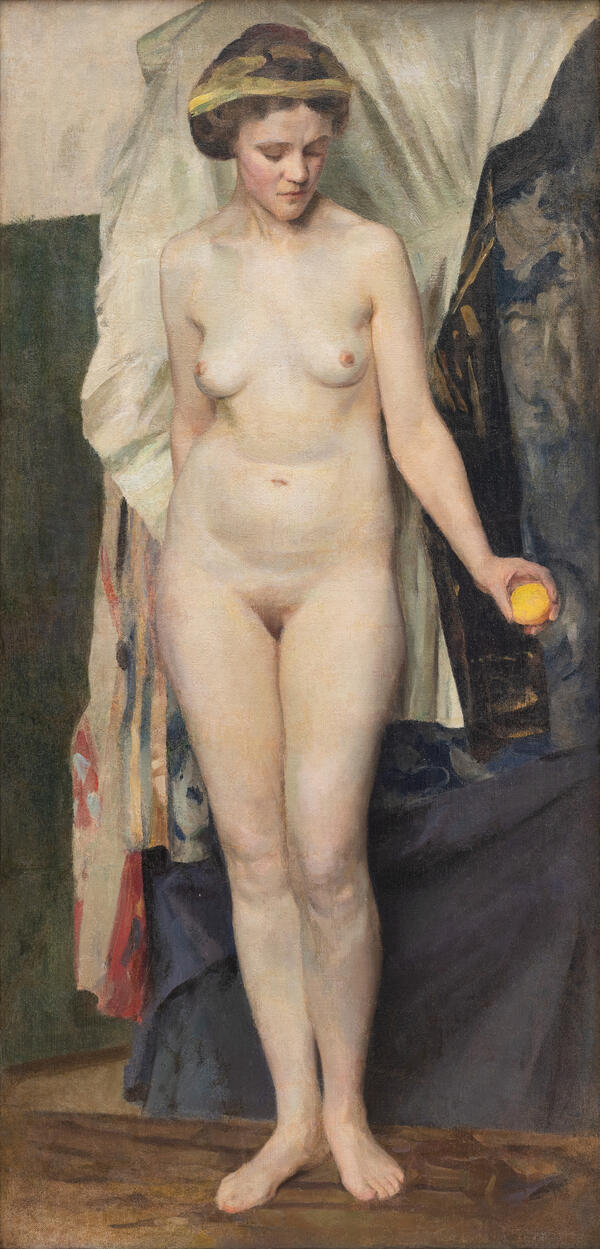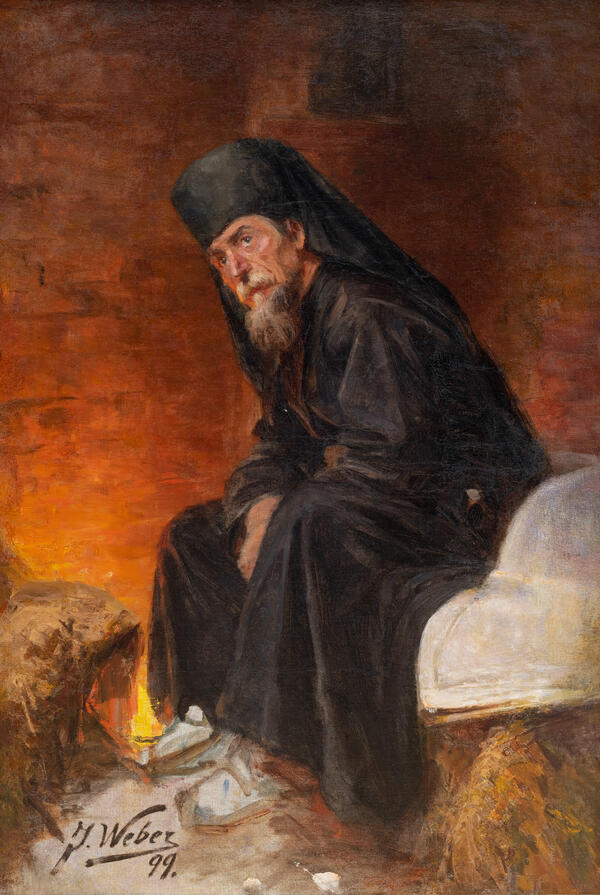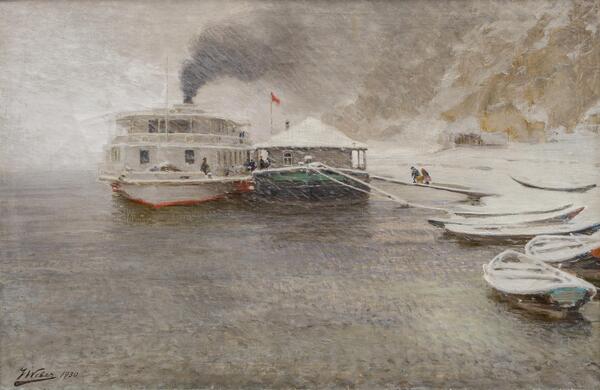The theme of floods is one of the main motifs in the paintings of Yakov Yakovlevich Weber. Admiration of nature during spring floods is reflected in this large canvas, where Weber tries to capture the beauty of spring awakening through the play of light and shadow, the rendering of light and air mediums and deep perspective, as well as the shades of green, yellow and blue. The canvas depicts midday. The wind has died down, the sky is covered with light purple clouds, the tops of trees are illuminated by the sun, the water is a bright spot occupying the middle ground of the canvas. The whole color scheme of the painting is united by emerald green, lapis lazuli of the water surface and the landscape in the distance. This color unity attracts the eye of the viewer; the grass and the lonely boat in the foreground complement the image of nature’s triumph.
As a pupil of Konstantin Korovin and Konstantin Savitsky, Yakov Weber continued to develop the traditions of Russian realist landscape painting. In his work, Weber sought to express the feelings evoked by the beauty of the inimitable Russian river Volga, which served as the main source of inspiration for the painter. Weber did not paint nature in general, but rather the nature of his native land, noting its peculiar unassuming beauty.
The paint and prime layers of “Spring Flood” were
significantly damaged. In 2013, the Engels Museum of Local Lore in cooperation
with the International Union of German Culture with the support of the German
Embassy in the Russian Federation organized an exhibition project “The Art of
Yakov Yakovlevich Weber”. The exhibition was held in the Central House of Artists
in Moscow. Thirty paintings by the artist from the museum’s art collection were
displayed at the vernissage. Four works were presented in an updated form,
after the restoration work carried out in the Central Museum of the Great
Patriotic War. Among them was “Spring Flood. Study”, 1927. Thanks to the
restoration in 2013, the painting now takes pride of place in the exhibition of
the Engels Museum of Local Lore.




